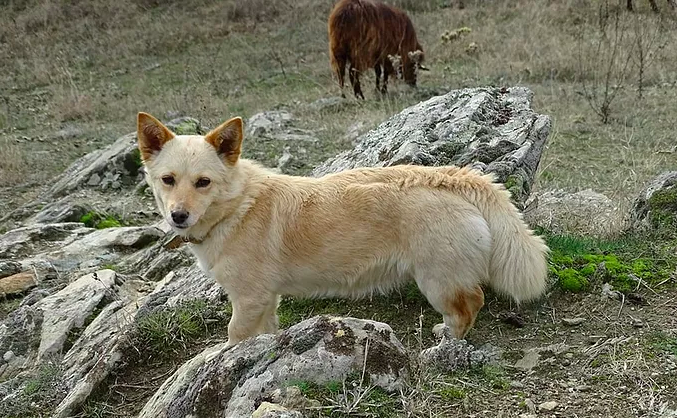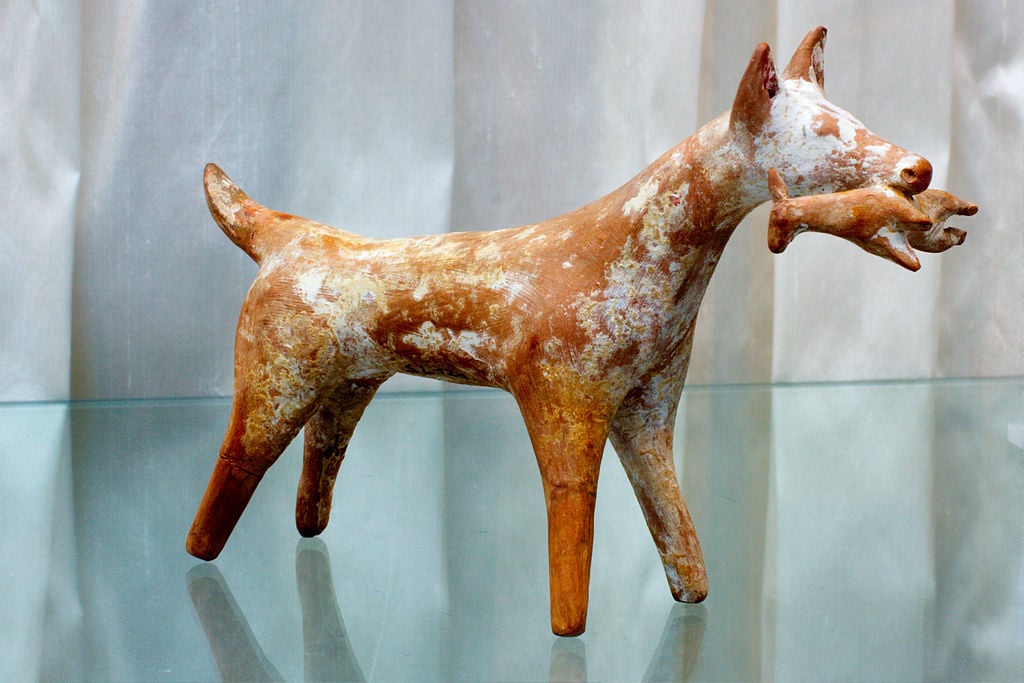
Dog lovers in Greece fear that a controversial new pet law in the country could further threaten the already-vulnerable ancient Greek dog breed called the Alopekis.
This is due to the fact that the pets of the specific breed, which is not officially recognized by the Greek state, are often mistaken as strays, and could easily be sterilized under the law, potentially reducing the already-low numbers of the canine.
For many years, Greeks — and others — have been dismayed by the country’s large number of stray cats and dogs that roam Greek streets.
Yet attempts at solving the pressing issue may put some of the country’s most ancient breeds, particularly the Alopekis, at risk of massive population decline.
The Alopekis are a rare example of an ancient small dog breed, and they are known for their sweet and intelligent natures.
The dogs, which have an adorable fox-like appearance, are mainly found in rural areas in Northern Greece.
Despite their ancient history and vulnerable status, the breed is not currently protected or monitored by the Greek state.
Greek pet law supports mandatory sterilization to reduce strays
The law, which is named “Argos” after the famed Greek hero Odysseus’s canine companion, is aimed at solving Greece’s tragic issue regarding stray animal populations.
The Greek pet law suggests that the mandatory sterilization of stray cats and dogs, particularly in the countryside and on the islands, is the key to tackling the massive issue.
Although many view the sterilization of these stray animals as an effective solution, owners of rare, threatened ancient Greek dog breeds, such as the Alopekis, fear that the law could dramatically reduce the populations of these ancient canines.
How the law threatens the ancient Greek dog breed Alopekis

The number of dogs of the ancient breed, which has a history stretching back nearly 7,000 years, has been drastically dropping off in recent years.
The ancient Greek dog breed is already threatened by not only human activity such as urbanization and pollution by agricultural pesticides, but is also at risk of dying out due to breeding with other dogs that are not Alopekis.
Additionally, the female canines of the breed have a very long, slow reproductive cycle, as they are only fertile once a year.
Once the female Alopekis does get pregnant, she often has a very small litter due to her own small size. Her few puppies are also extremely vulnerable and many do not survive to develop into adulthood.
Advocates for the breed argue that the mandated sterilization campaigns are conducted without regard to native, ancient breeds such as the Alopekis.
In fact, many locals and sterilization advocates do not even realize that the breed is so ancient, and they simply believe it is a cross-breed.
Additionally, although many Alopekis are people’s pets and not strays, they are often kept as “latchkey dogs,” or pets that come and go as they please, often roaming around their rural surroundings.
This means that they could easily be mistaken for strays and sterilized.
There are many groups that monitor and hope to protect this ancient breed, but they argue that the best way to ensure the survival of the Alopekis is recognition and protection of the breed by the Greek state.
The Hellenic Society for the Protection and Rescue of Indigenous Breeds and Domestic Animals, or Amalthea, has been fighting to support the Alopekis for years.
The Alopekis Study and Care Group, OMMA, which fights for the same cause, has also been active since 2013.
Veterinary surgeon Professor Spyros Chleiounakis, accompanied by a team of scientists, has dedicated his life to monitoring and preserving vulnerable Alopekis populations in northern Greece.
His study of the ancient Greek dog breed has both greatly contributed to international awareness of the Alopekis, as well as scientific understanding of the canine.
The ancient history of the archaic dogs

The ancient Greek dog breed was popular in antiquity, and evidence of its existence and domestication dates back to the Neolithic Era.
Similar breeds have been found throughout the Balkans, as well as in ancient Greek colonies in southern Italy, the Iberian Peninsula, and the Balearic Islands.
According to DNA analysis, however, the Alopekis is thought to be one of the oldest domesticated dog breeds in all of Europe.
Further study into the fascinating breed is necessary in order to fully understand not just the Alopekis but also the development of European dog breeds in general.
Depictions of the adorable pup are found throughout the art of ancient Greece, and they are also mentioned in many ancient texts.
It is thought that during antiquity, the Alopekis was a popular pet across Greece. The pup, which is extremely playful and intelligent, was most likely used to herd and protect livestock and protect the home from pests, while also serving as a faithful friend.
See all the latest news from Greece and the world at Greekreporter.com. Contact our newsroom to report an update or send your story, photos and videos. Follow GR on Google News and subscribe here to our daily email!



